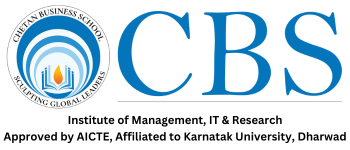Data Science and Machine Learning

Introduction
Data Science is an interdisciplinary field that utilizes statistical techniques, machine learning (ML), and data analysis to extract insights from large datasets. ML, a subset of AI, enables systems to learn patterns and make predictions without explicit programming, driving innovation across industries (Provost & Fawcett, 2013).
Data Science (DS) and Machine Learning (ML) are revolutionizing industries by enabling data-driven decisions. This presentation aims to introduce the fundamentals of DS and ML, their applications, and future trends, empowering learners with essential insights.
(James, 2020)
The key aspects of Data Science and Machine Learning:
- Introduction to Data Science:
- Defined Data Science as an interdisciplinary field combining statistics, programming, and domain expertise.
- Highlighted how data-driven insights influence decision-making and efficiency across industries.
- Machine Learning Basics:
- Explained the three types of Machine Learning:
- Supervised Learning: Using labeled data for training.
- Unsupervised Learning: Identifying hidden patterns in unlabeled data.
- Reinforcement Learning: Learning through trial and error.
- Discussed popular algorithms like Linear Regression, Decision Trees, and Neural Networks.
- Explained the three types of Machine Learning:
- Real-World Applications:
- Demonstrated the impact of Data Science and ML in various industries, including:
- Healthcare: Disease prediction and drug discovery.
- Finance: Fraud detection and stock market predictions.
- E-commerce: Personalized recommendations and targeted advertising.
- Social Media: Sentiment analysis and fake news detection.
- Demonstrated the impact of Data Science and ML in various industries, including:
- Challenges and Future Scope:
- Addressed data quality issues, overfitting, and scalability concerns.
- Explored future trends such as AutoML, Explainable AI, AI in Edge Computing, and Quantum AI for enhanced ML capabilities.
Real World Applications
Data Science and ML have transformed multiple industries. In healthcare, they enable predictive diagnostics, while finance benefits from fraud detection models. E-commerce platforms use recommendation systems, and social media giants leverage ML for personalized content delivery.
(Brown et al., 2021)
Future of Data Science & ML
The future of Data Science and ML lies in innovations like AutoML, which automates model building, and Explainable AI, which enhances transparency. Quantum AI is expected to redefine data processing capabilities, accelerating complex problem-solving.
(Goodfellow et al., 2018)
Practical Use Cases With AI/ML
1. Healthcare:
AI/ML enhances diagnosis accuracy through predictive analytics and image recognition. It aids in personalized treatment plans and drug discovery, improving patient outcomes and reducing costs (Esteva et al., 2017).
2. Finance:
AI/ML revolutionizes fraud detection, risk assessment, and algorithmic trading. It predicts market trends, identifies suspicious activities, and automates financial processes, enhancing efficiency (Chorafas, 2018).
3. E-commerce:
AI/ML optimizes product recommendations, pricing strategies, and customer segmentation. It enables personalized shopping experiences, boosting sales and customer retention (Liu et al., 2020).
4. Social Media:
AI/ML powers content moderation, trend analysis, and ad targeting. It detects fake news, personalizes feeds, and enhances user engagement through predictive algorithms (Chen et al., 2019).
Emerging Trends in AI
- AutoML:
Automated Machine Learning (AutoML) simplifies model building, making AI accessible to non-experts. It streamlines data preprocessing, model selection, and hyperparameter tuning (Feurer et al., 2019). - Explainable AI (XAI):
XAI enhances AI model transparency and interpretability, helping users understand predictions. It improves trust, accountability, and compliance with regulations (Doshi-Velez & Kim, 2017). - Quantum AI:
Quantum AI leverages quantum computing for faster data processing and complex problem-solving. It promises breakthroughs in optimization, drug discovery, and cryptography (Preskill, 2018).
Mentor: Prof. Shweta Lali
Authors: Pramod, Neha, Manoj, Smita, Bindushree







